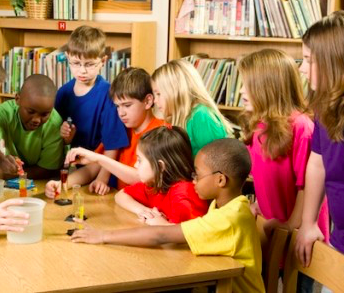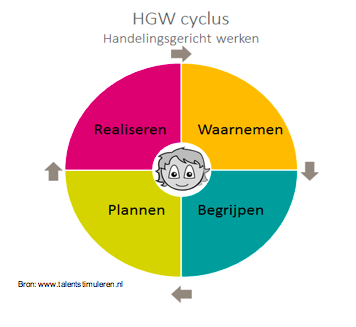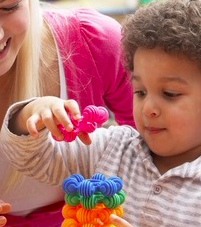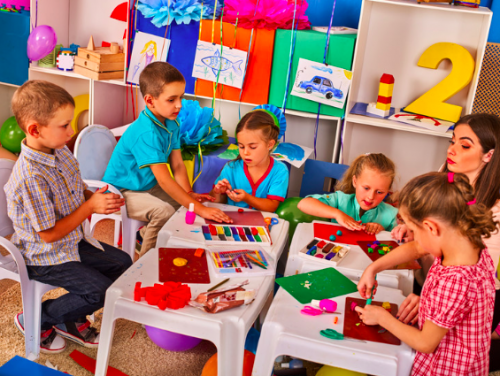Asynchronous development of toddlers
What
Toddlers with a developmental advantage often have a non-synchronized development in the intellectual, physical and emotional fields. In some toddlers, these three develop more or less equally: a synchronous development. But in toddlers with a development advantage this is often not the case. It seems that these children do not have one mental age but different ones. That makes them vulnerable.
The development profile of a three-year-old child could look like this:
think development: age 6 years
motor development: age 3 years
emotional development: age 4 years.
game development: age 4 years
But many other variations are possible
Examples.
> A child of five does enrichment tasks but has to ask the teacher to tie his laces
> The toddler wants to play father and mother, but during play it appears that the other children do not keep their role. The toddler is therefore disappointed and frustrated.
> A child already reads books intended for ten-year-olds, but gets nightmares from the many impressions in the book that it can not yet emotionally place.
The development profile of a three-year-old child could look like this:
How
You can not do anything about the way children develop, so asynchronous development can not be corrected. But when parents or teachers really understand a child it can be supported in development, self-confidence and self-image.
a few tips:
1. It is essential to recognize that social and emotional development of a child is different from intellectual development. Understand that emotional outbursts or frustrated feelings might be a result of that difference.
2. Be aware of the fact that because of asynchronous development special needs arise. For example, children with a developmental lead need maybe emotional support, but intellectual challenge too. A gifted child of four needs a hug, but can be busy with dinosaurs at the same time.
3. Recognize that children with a developmental lead can not always associate with peers with the same development. This means, for example, that they do mix well with children of their calendar age, but also need to cooperate with development matches in the intellectual field. That could be very well older children or even adults.
4. A child feels that something is not "right" because he doesn't recognize his "problems" in other children of his group. This could result in a sense of insecurity ("Am I weird? What is the matter with me? What am I awkward!"). An explanation about what happens, naming what a child can not (yet) figure out, creates safety and security for him.




